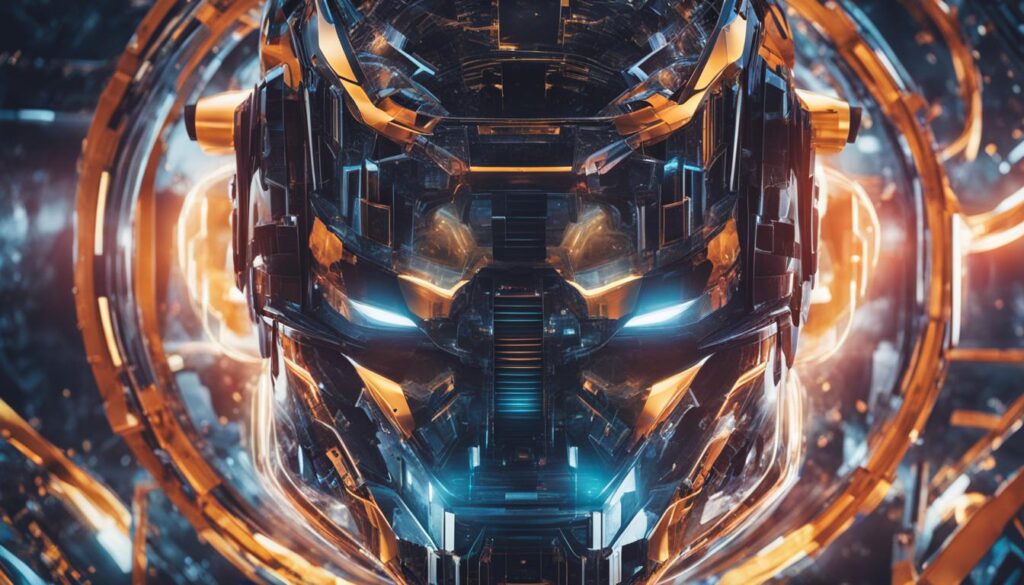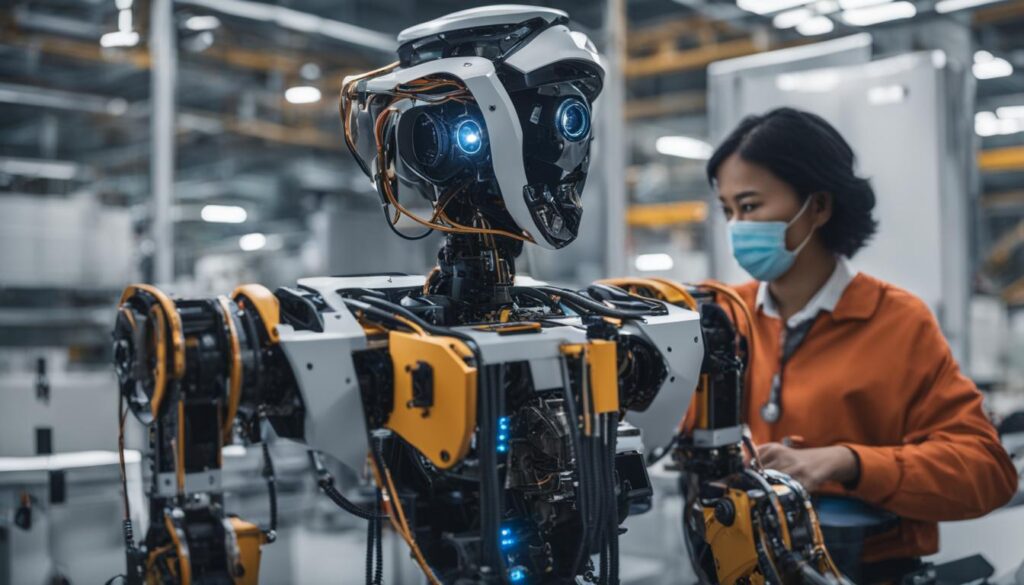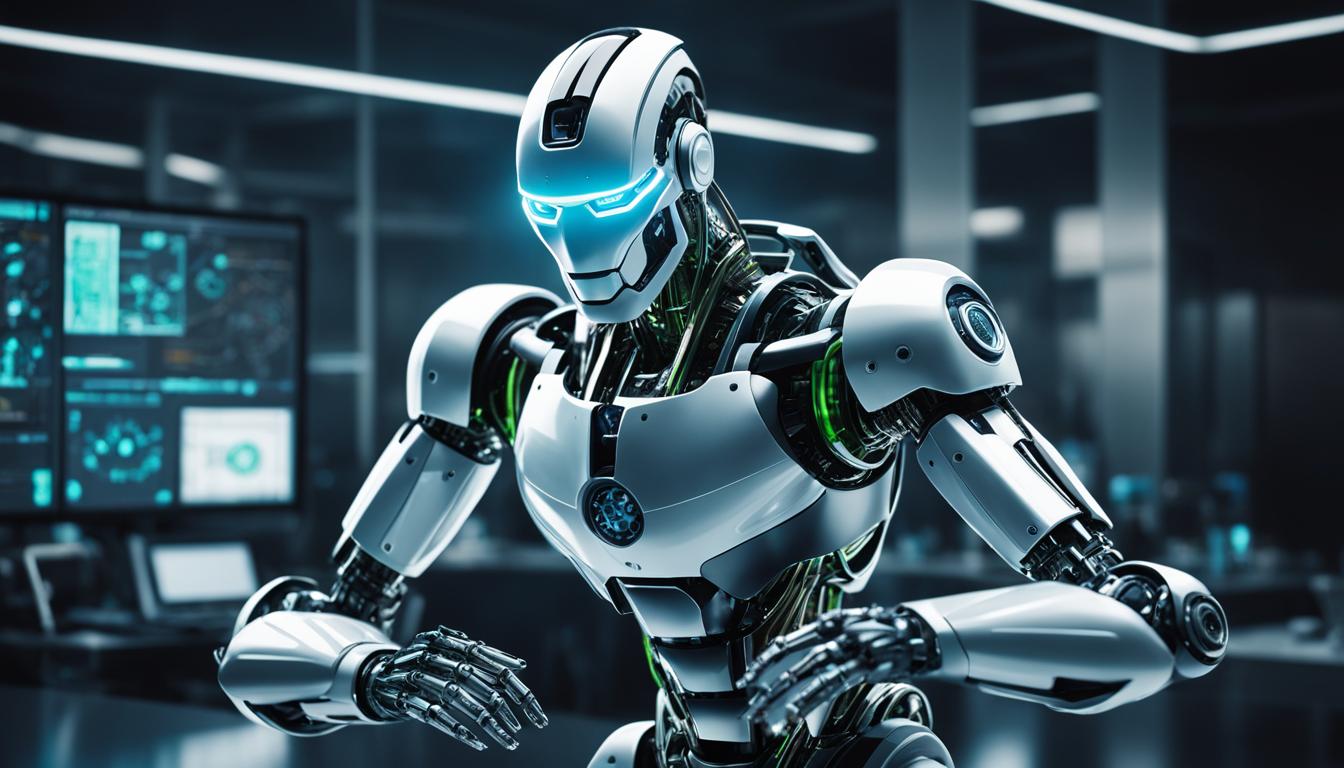Robots and artificial intelligence (AI) are often misconstrued as interchangeable terms, but they are actually distinct technologies with unique functionalities. It is crucial to comprehend the dissimilarities between them to better grasp their impact on various industries and society as a whole.
While AI focuses on the development of systems capable of performing tasks that require human intelligence, robots are physical machines that can autonomously carry out specific tasks or be controlled externally.
The integration of AI into robots allows for the creation of autonomous robots that can learn and adapt over time. This convergence enhances the adaptability and cognitive capabilities of robots, making them more efficient in performing complex tasks.
Contents
- 1 AI and Robotics: Conceptual Differences
- 2 Differences in Degree of Automation
- 3 Differences in Adaptability
- 4 Conclusion
- 5 FAQ
- 5.1 What is the difference between a robot and artificial intelligence?
- 5.2 How would you define a robot and artificial intelligence?
- 5.3 What are the distinctions between robot and artificial intelligence?
- 5.4 How do AI and robotics differ in terms of adaptability?
- 5.5 What is the relationship between a robot and artificial intelligence?
- 6 Source Links
Key Takeaways:
- Robots and AI are distinct technologies with different functionalities.
- AI focuses on developing systems that mimic human intelligence, while robots are physical machines.
- The combination of AI and robotics leads to the development of autonomous robots that can learn and adapt over time.
- The integration of AI into robots enhances their adaptability and cognitive capabilities.
- Understanding the differences between robots and AI helps in understanding their impact on industries and society.
AI and Robotics: Conceptual Differences
In order to fully comprehend the distinctions between AI and robotics, it is crucial to delve into their conceptual definitions. AI, or artificial intelligence, pertains to the development of computer programs that possess the capability to autonomously make complex decisions and solve real-world problems. This is achieved through the analysis of vast amounts of data, utilizing machine learning and reinforcement learning techniques to continually enhance its analytical capabilities over time. On the other hand, robotics is a branch of technology that focuses on the design and construction of physical machines, also known as robots. These robots are equipped to perform tasks autonomously or semi-autonomously with the help of programming and sensor interactions.
While AI empowers machines to make informed decisions, robotics provides the physical body that brings those decisions to life. It is the seamless integration of AI and robotics that allows for the creation of intelligent robots capable of executing tasks based on analytical insights. This combination ensures that machines possess both the cognitive abilities of AI and the physical capabilities of robots, making them functionally versatile and highly effective in various applications.
Defining AI and Robotics
Artificial Intelligence: Computer programs that autonomously make decisions and solve problems through the analysis of extensive data sets.
Robotics: The design and construction of physical machines capable of autonomous or semi-autonomous task execution through programming and sensor interaction.
By understanding the conceptual distinctions between AI and robotics, we gain a comprehensive understanding of the unique contributions each field makes to the advancement of technology and its impact on society.
| AI | Robotics |
|---|---|
| A computer program that makes complex decisions autonomously. | The design and construction of physical machines capable of task execution. |
| Utilizes machine learning and reinforcement learning to improve analytical capabilities. | Functions through programming and sensor interaction. |
| Relies on data analysis to solve real-world problems. | Brings physical functionality to the decision-making process. |
Differences in Degree of Automation
When exploring the distinctions between AI and robotics, one important factor to consider is the degree of automation. Automation refers to the utilization of software, devices, sensors, or other technologies to perform tasks that are typically done by humans. This technology-driven approach aims to streamline processes, increase efficiency, and minimize human error. However, the level of automation can vary depending on the specific application.
Software automation, for example, involves the use of mathematical and logical algorithms to complete repetitive tasks without human intervention. It is widely employed in various industries, such as finance, sales, and customer service, to handle routine operations and data analysis.
On the other hand, industrial automation goes a step further by incorporating physical robots to control and manage complex industrial operations. These robots are designed to perform specific tasks in manufacturing, assembly, and logistics, executing them with speed, precision, and accuracy.
The integration of AI into robotics takes automation to a whole new level. By infusing intelligence into the physical machines, AI-driven automation empowers robots with cognitive and learning capabilities. This allows them to adapt, make decisions, and perform tasks autonomously, without constant external controls. The synergy between AI and robotics not only enhances efficiency but also opens doors to new possibilities in various industries.

Let’s take a closer look at the differences in a table:
| Criteria | Automation | Robotics | AI-driven Automation |
|---|---|---|---|
| Definition | Use of software and technology to perform tasks | Physical machines performing tasks autonomously | Robots with cognitive capabilities and AI integration |
| Application | Business processes, data analysis | Manufacturing, assembly, logistics | Wide range of industries, autonomous decision-making |
| Level of Autonomy | Partial autonomy with software controls | Higher autonomy with physical execution | Full autonomy with cognitive capabilities |
| Learning and Adaptability | Basic repetitive tasks | Limited adaptability | Continuous learning and adaptability |
In summary, while automation and robotics both drive efficiency and productivity, the integration of AI into robotics creates a powerful combination known as AI-driven automation. This advanced form of automation enables robots to perform complex tasks autonomously, leveraging the cognitive capabilities and learning algorithms of AI. By understanding the differences in degree of automation, businesses and industries can harness the benefits of these technologies to optimize their operations and stay ahead in today’s increasingly digital world.
Differences in Adaptability
When it comes to adaptability, AI and robotics offer distinct capabilities and limitations. AI introduces the concept of adaptability to robotics, enabling the creation of AI-enabled robots with self-awareness and the ability to sense and respond to their environment.
Through the use of AI algorithms and machine learning, these robots can process sensory data, such as smell and spatial proximity, and adapt their behavior accordingly. This adaptability allows them to perform complex tasks in dynamic environments with greater efficiency and accuracy.
Furthermore, AI-enabled robots have the remarkable capability to engage in interactive, human-like conversations. With natural language processing and machine learning algorithms, they can understand and respond to human speech, making interactions more seamless.
On the other hand, traditional robots without AI integration possess limited adaptability. They are designed to carry out specific tasks with predefined instructions and lack the ability to learn or make decisions on their own.
Ultimately, the combination of AI and robotics opens up new possibilities for creating robots that are more intuitive, self-aware, and adaptable. These advancements in adaptability pave the way for robots that can autonomously learn, interact, and collaborate with humans in a human-like manner, revolutionizing industries and enhancing our daily lives.

The Benefits of AI and Robotics Adaptability
The adaptability of AI-enabled robots brings several benefits to various industries and applications:
- Increased efficiency and productivity: AI-enabled robots can adapt and optimize their performance based on changing conditions, improving efficiency and productivity in tasks.
- Enhanced safety: By sensing and adapting to their environment, AI-enabled robots can avoid obstacles and potential hazards, reducing the risk of accidents in dynamic environments.
- Improved precision and accuracy: Adaptability allows AI-enabled robots to refine their actions and movements, enabling precise and accurate task execution.
- Flexibility in complex tasks: Adaptability equips AI-enabled robots with the ability to handle complex tasks that require real-time decision-making and adjustment, such as autonomous driving or medical procedures.
The table below provides a comparative overview of the adaptability features in traditional robots and AI-enabled robots:
| Features | Traditional Robots | AI-Enabled Robots |
|---|---|---|
| Learning Capability | Limited or absent | Can learn and adapt over time |
| Decision-Making | Pre-programmed instructions | Can make autonomous decisions based on real-time data |
| Environment Sensing | Basic sensor integration | Advanced sensory data processing and response |
| Human Interaction | Basic or non-existent | Can engage in interactive, human-like conversations |
Conclusion
In conclusion, understanding the differences between robots and AI is crucial in appreciating their unique functionalities and impact on various industries and society. While AI focuses on developing software programs capable of making complex decisions and solving real-world problems, robotics deals with the design and construction of physical machines that can autonomously carry out tasks.
The integration of AI into robotics enables the development of AI-driven automation, enhancing the adaptability and cognitive capabilities of robots. By leveraging AI algorithms, robots can learn, adapt, and interact with their environment, enabling them to effectively perform complex tasks and engage in human-like conversations.
By grasping these distinctions, you gain a deeper understanding of how robots and AI are revolutionizing industries such as manufacturing, healthcare, and transportation, among others. The advancements in AI and robotics hold tremendous potential to streamline processes, improve efficiency, and create new opportunities for innovation. As these technologies continue to evolve, it is essential to stay informed and explore their transformative possibilities.
FAQ
What is the difference between a robot and artificial intelligence?
While artificial intelligence (AI) focuses on developing systems that can perform tasks requiring human intelligence, robots are physical machines that can carry out specific tasks autonomously or through external controls.
How would you define a robot and artificial intelligence?
Artificial intelligence refers to the development of computer programs that can make complex decisions and solve real-world problems by analyzing data, while robotics is the branch of technology that focuses on the design and construction of physical machines capable of performing tasks autonomously or semi-autonomously.
What are the distinctions between robot and artificial intelligence?
The key distinctions between robots and artificial intelligence lie in their conceptual definitions and degree of automation. AI enables machines to make decisions and solve problems, whereas robotics provides the physical body for the execution of those decisions. Automation refers to the use of software or robotics to perform tasks, and AI-driven automation combines the cognitive capabilities of AI algorithms with the physical capabilities of robots.
How do AI and robotics differ in terms of adaptability?
AI brings adaptability to robotics, enabling the creation of robots with self-awareness and the ability to sense and respond to their environment. AI algorithms and machine learning enable robots to process sensory data and engage in interactive conversations. Robots, on the other hand, possess limited adaptability and are designed for specific tasks without the ability to learn or make decisions.
What is the relationship between a robot and artificial intelligence?
The relationship between a robot and artificial intelligence lies in the integration of AI into robotics. This combination enhances the adaptability and cognitive capabilities of robots, making them more intuitive and efficient in performing complex tasks.




